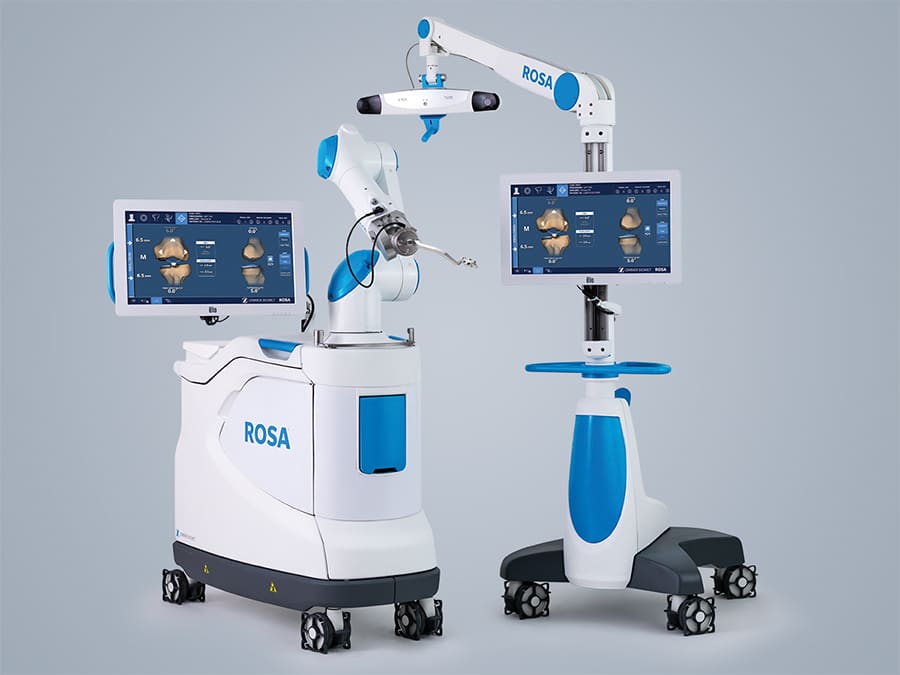
By AkersArt
Ask the Expert: Robotic Knee Implants

John Williams Jr., MD
Orthopedic Surgeon at Advanced Orthopedic Institute
What are the benefits of robotic knee implants?
I have been performing total knee replacements for 23 years. Today, I perform an average of 400 total knee replacements each year. Two years ago, I began performing total knee replacements using ROSA robotic technology. ROSA stands for Robotic Surgical Assistant.
Since no two bodies are the same, getting a precise knee implant that fits the patient’s anatomy is crucial for comfort, mobility, and overall experience following knee replacement surgery. For me, ROSA is an incredibly helpful tool because it helps align the implant for exact fit and accuracy.
ROSA is a robotic platform that takes a personalized approach to each patient’s knee replacement using a three-dimensional model created from special x-rays.
Thanks to this technology, we can be more precise with the alignment and placement of implants. For patients, this leads to a more natural feeling of the knee.
The x-rays are matched to a patient’s knee to help deliver accurate placement of implants with less soft-tissue dissection. The robot’s computer technology, camera, and optical trackers assist me to control and move surgical instruments.
Thanks to this technology, we can be more precise with the alignment and placement of implants. For patients, this leads to a more natural feeling of the knee. More importantly, the implant tends to last between 20-25 years. It’s the increase in precision that makes robotic surgery so favorable.
Depending on age and activity level, some patients go home on the same day. Others may require a one-night hospital stay. In addition, recovery times are shortened thanks to a multi-modal approach that includes pain control medication, nerve blocks, and physical therapy. That’s great news for residents of The Villages who lead active lifestyles.
This technology is more advanced than computer-assisted surgery. Computer-assisted surgery still relies on the surgeon to make the cuts and implant the devices. Robotic surgery uses a robotic arm to perform the bone cuts. Plus, robotic surgery is thought to be more the wave of the future than computer-assisted surgery.
Simply put, when I perform knee replacement surgeries, my goal is to help patients return to the quality of life they enjoyed before they began experiencing knee problems. ROSA gives me confidence and information I can use to achieve that goal.








